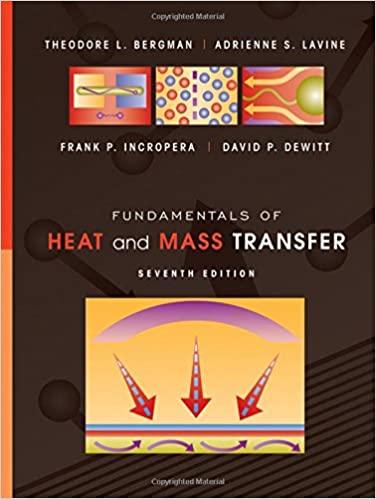An automobile radiator may be viewed as a cross-flow heat exchanger with both fluids unmixed. Water, which
Question:
An automobile radiator may be viewed as a cross-flow heat exchanger with both fluids unmixed. Water, which has a flow rate of 0.05 kg/s, enters the radiator at 400 K and is to leave at 330 K. The water is cooled by air that enters at 0.75 kg/s and 300 K.
(a) If the overall heat transfer coefficient is 200W/m2 · K, what is the required heat transfer surface area?
(b) A manufacturing engineer claims ridges can be stamped on the finned surface of the exchanger, which could greatly increase the overall heat transfer coefficient. With all other conditions remaining the same and the heat transfer surface area determined from part (a), generate a plot of the air and water outlet temperatures as a function of U for 200 ≤ U ≤ 400 W/m2 · K. What benefits result from increasing the overall convection coefficient for this application?
Step by Step Answer:

Fundamentals Of Heat And Mass Transfer
ISBN: 9780470501979
7th Edition
Authors: Theodore L. Bergman, Adrienne S. Lavine, Frank P. Incropera, David P. DeWitt





